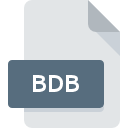.BDB File Extension

Microsoft Works Database Backup File
| Developer | Microsoft |
| Popularity | |
| Category | Backup Files |
| Format | .BDB |
| Cross Platform | Update Soon |
What is an BDB file?
The .BDB file extension represents a Microsoft Works Database Backup file. This file type is specifically associated with Microsoft Works, a productivity suite that was popular before being discontinued.
The .BDB file serves as a backup for databases created in Microsoft Works, ensuring that users can recover their data in case of corruption or accidental deletion.
This article delves into the origin, history, technical specifications, and practical aspects of working with .BDB files.
More Information.
Initially, the Microsoft Works Database Backup (.BDB) file format was designed to support the Microsoft Works Database (.WDB) file format. The .WDB files were used to store databases within Works, and the .BDB files acted as backup copies.
These backups were crucial for preserving data integrity and ensuring that users had a way to recover their database information in the event of file corruption or accidental deletion.
As Microsoft Works gained popularity, it became a popular choice for users seeking a budget-friendly alternative to Microsoft Office.
The .BDB format provided an additional layer of security by allowing users to regularly back up their database files.
As technology advanced and more robust database management systems emerged, the popularity of Microsoft Works declined. Microsoft officially discontinued Works in 2009, and support for .BDB files became limited.
Origin Of This File.
Microsoft Works was first released in 1988 as an affordable alternative to Microsoft Office.
It was designed to provide basic office applications like word processing, spreadsheets, and databases to home users and small businesses. Within the Works suite, users could create databases for storing various types of information.
To protect these databases from data loss, Microsoft Works introduced the .BDB file format to create backups of these databases.
File Structure Technical Specification.
The .BDB file format is a binary file type, designed to store backup copies of Microsoft Works Database files. The structure of a .BDB file mirrors that of its corresponding .WDB file, containing the same data but in a backup format.
Here are some key technical aspects of .BDB files:
- Header Information: The .BDB file starts with a header that contains metadata about the backup, such as the date and time of creation, and possibly the version of Microsoft Works used.
- Data Blocks: Following the header, the file contains data blocks that replicate the structure of the original
.WDBfile. These blocks include tables, fields, and records from the database. - Checksum: To ensure data integrity, .BDB files may include a checksum or other validation data to verify that the backup has not been corrupted.
The specific internal structure and encoding of .BDB files are proprietary to Microsoft Works and are not well-documented outside of Microsoft’s development resources. This can make the .BDB file format somewhat opaque for users and third-party applications.
How to Convert the File?
Converting .BDB files to other formats can be challenging due to their proprietary nature. Here are some methods that might be used to convert .BDB files:
- Microsoft Works: The most straightforward method is to use the original Microsoft Works application. If you still have access to Microsoft Works, you can open the .BDB file and then export or save the database in a more commonly used format, such as
.CSVor.XLS. - Third-Party Tools: Some third-party conversion tools may offer limited support for .BDB files. These tools often require specific configurations and may not always provide accurate results. It is crucial to research and use reputable software to avoid data loss.
- Manual Data Extraction: If conversion tools are not available, you might manually extract the data by opening the .BDB file in a hex editor or using a file viewer. However, this method is complex and requires technical expertise to interpret the data correctly.
Advantages And Disadvantages.
Advantages:
- Data Protection: The primary advantage of the .BDB file format is its role in safeguarding database information. Regular backups can prevent data loss due to corruption or accidental deletion.
- Ease of Use: For users of Microsoft Works, creating and managing .BDB files is straightforward, as the process is integrated into the database application.
Disadvantages:
- Limited Support: With the discontinuation of Microsoft Works, support for .BDB files has diminished. Modern operating systems and software do not natively support this format.
- Compatibility Issues: Since .BDB files are specific to Microsoft Works, they cannot be easily opened or used with other database management systems or office suites.
- Obsolescence: As technology has evolved, many users have moved on to more advanced database solutions, rendering .BDB files increasingly obsolete.
How to Open BDB?
Open In Windows
- Microsoft Works: If you have an old version of Microsoft Works installed, you can open .BDB files directly within the application.
- Compatibility Mode: For newer versions of Windows, you might try running Microsoft Works in compatibility mode if the software is still available.
Open In Linux
- Wine: You might use Wine, a compatibility layer that allows running Windows applications on Linux. Install Microsoft Works through Wine to open and manage .BDB files.
- Virtual Machine: Alternatively, running a Windows virtual machine on Linux can provide access to Microsoft Works for working with .BDB files.
Open In MAC
- No Native Support: macOS does not natively support Microsoft Works or .BDB files. You would need to use a Windows virtual machine or emulator to run Microsoft Works and access .BDB files.










